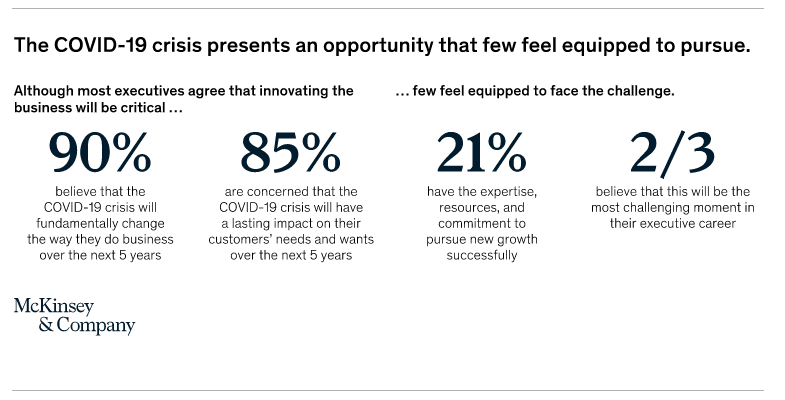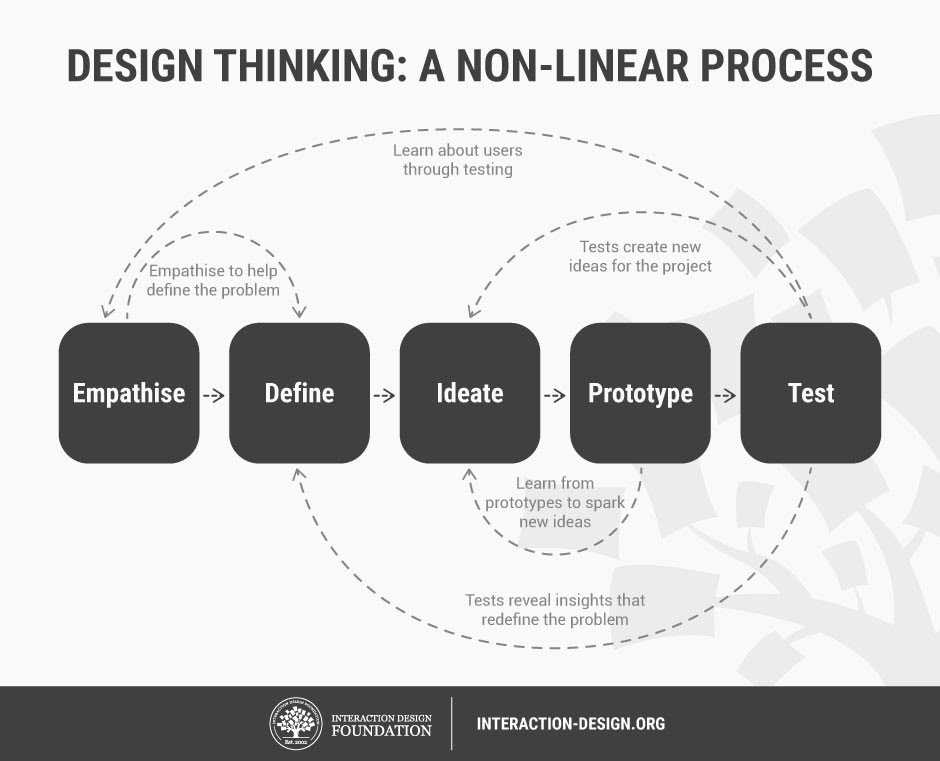The race is on. Since the introduction of social distancing measures earlier this year, the market has suddenly become a real life version of “the floor is lava”, with startups and even large enterprises jumping from idea to idea, and competing for funding, customers, and survival.
Whether their whole business model needs a reset or they need to develop new growth-focused features, many are in an innovate-or-die situation.
The latest Startup Ecosystem Report by Startup Genome found that four out of ten startups have less than three months of capital runway.

To add to this, Startup Genome found that since the beginning of the coronavirus crisis, VC funding has taken a hit with startups receiving 20% less in investment globally.
Investors are going to be more conservative with their funds and even tougher when scrutinizing a startup’s potential. Three out of every four startups have experienced disruptions in funding rounds with 18% being canceled altogether and 54% being delayed.
And the outlook isn’t much better from the corporate side. McKinsey found that, while executives agree that COVID-19 will have a significant impact on customer needs and could present new opportunities, only 21% feel they have what’s needed to innovate their growth model.

But the outlook isn’t all grim. Times of crisis also usher in new opportunities for those with the insight and agility to act. What both startups and enterprises really need to innovate are: product-market fit and buy-in (whether it’s from external VCs or internal stakeholders).
Luckily, there are two strategies that, when combined, can give you both the customer insights and buy-in you need to quickly get your new idea off the ground: Design Thinking and Proofs of Concept.
Reconnecting with customers using design thinking
70% of new startups flop. There are a number of different reasons why but, believe it or not, after interviewing 339 failed startups, CBI Insights found that the number one reason was that there was simply no market need for their product.
And it’s not just startups. Consider Google Glass or Apple’s Butterfly Keyboard, two inventions with such high expectations and then a quick drop down to reality.
This is really about the disconnect between companies and their customers. You may have found a way to put the latest cutting edge tech behind a product, but is it actually a practical solution for your customers and do they even need it?
Today, this disconnect is only growing wider. Even if you have a mountain of historical customer data to draw on, changes in social distancing have also brought about major changes in consumer behaviors. Suddenly concerns over convenience, price, and safety have begun to factor more and more into decision-making than ever before.
Ditmar Haist, Vice President, Technology for digital transformation and innovation tech company, Rangle, explained, “A lot of companies now are really scrambling to make their digital experiences better for customers and deliver the standard of service that retailers like Amazon have set. That’s a problem that seems pretty clear, but there’s not necessarily one best solution for each company. It really depends on their unique business value proposition and how they intend to position themselves in this changing market.”
This means it’s time to go back to square one.
What is design thinking?
Design thinking is a development process that helps teams understand and empathize with their users’ needs, pains and intrinsic motivations. In this way, it pushes you to challenge assumptions, reframe issues, and discover truly unique solutions for your users.
It involves:
- Empathizing with your customers by gathering feedback and observing them as they interact with your product.
- Using these observations to define the real problems your customers face.
- Generating creative and inclusive ideas during cross-collaborative brainstorms.
- Developing a prototype which you can put into the hands of your users.
- Testing your prototype to, again, gain observations, feedback and insights.
Instead of representing a rigid five-step process, design thinking is a continuous and non-linear loop. Based on the results of your testing phase, you may want to start the process all over again from the beginning, or you may want to go back and brainstorm new ideas for an additional feature. In this way, it’s a really fluid and adaptable way of getting to where you need to be.

Today we’re seeing companies across industries pivoting in completely new and out of the box ways. Gin distilleries are making hand sanitizer, restaurants are giving live stream cooking classes, and aspiring designers are creating fashionable face masks. These kinds of innovations come from truly empathizing with and understanding what your audience needs most.
Gaining buy-in: The second half of the innovation dilemma
So you’ve gone through the design thinking process and your team comes up with some really exciting new ideas. What’s still holding companies back?
Design thinking is not a silver bullet solution. As Haist explained, “Design thinking is a framework for developing customer empathy, but it doesn’t always lead naturally to an action plan.”
While design thinking gives you great ideas, it’s often harder to take that big step from conceptualization to action.
“Working in that agile, fail-fast sort of way is not natural and not easy for a lot of businesses. So aligning around one idea and understanding that, in the digital world, you might have to fail before you get to the right answer, is scary for a lot of businesses who just want the right answers,” said Bertrand Karerangabo, Vice President of Technology Strategy at Rangle.
This is where alignment issues come in. After surveying 270 corporate leaders, a study by Innovation Leader found the top barriers to innovation were:
- Politics, turf wars, and a lack of alignment (55%)
- Cultural issues (45%)
- Inability to act on signals crucial to the future of the business (42%)
- Lack of budget (41%)
- Lack of the right strategy or vision (36%)
According to Haist, this is really the classic issue in most cases. “It’s often organizational inertia. It’s difficult to get different teams or different parts of a company aligned around a project, especially if you have a company that works on different products, across departments and in different markets.”
Especially in a large, established organization, trying to bring in new changes that could disrupt the long standing ‘way of doing things’ is often met with intense resistance. While learning from past experiences is important, always looking to the past ignores the fact that we’re dealing with unprecedented times. Times like these can often call for a complete break from the status quo.
What is a Proof of Concept and how does it help accelerate innovation?
Instead of advising companies to go all in with a full scale product development or business restructuring, “Creating a Proof of Concept is a quick and dirty way to be sure. It may or may not work, but at least then you know,” Karerangabo explained.
The great thing about a Proof of Concept is that it’s much more sophisticated than a simple UI wireframe but also much less time and commitment intensive than a prototype. Instead of taking a few months to develop, a PoC is a quick pilot that’s developed in a matter of weeks.
It may or may not resemble the product you eventually want to build—The main purpose behind it is simply to get the evidence you need to either continue developing the idea or drop it and move on to the next thing.
For example, Maryam Nabavi, an aerospace engineer whose son showed difficulty with his language development, came up with the great idea to develop Babbly, an AI based app that would allow parents to monitor their toddler’s development by analyzing their speech and language skills. But she found that wireframes weren’t enough to convince VCs to invest. They wanted proof that she could actually develop an algorithm that could identify vocalization from babies and adults.
The Rangle team helped her build a Proof of Concept in a few weeks. With this, Babbly was able to close $250K in funding and win several awards, before the product was even on the market.
“At the startup level, any idea can possibly be a good one, but spending the time and money to be sure before launching can be really powerful, and help you get the seed funding and recognition you need to get your product up and running,” Karerangabo said.
For established companies with a product already on the market, developing a Proof of Concept can help you test out new feature ideas, without having to burn through the cash and time it takes to build them out completely.
It’s time to get moving
“Design Thinking and Proofs of Concept are not incompatible or diametrically opposed. The difference between them is the difference between thinking and doing. It’s about taking the best of the design thinking principles, and then hitting the accelerator,” Haist told TNW.
The challenge of the coming months is a great time to get creative and start experimenting. Introducing structured innovation processes can help you get there as your company navigates a post-COVID world. You can tap into your next revenue stream faster with a Proof of Concept that invigorates your business growth.
Get the TNW newsletter
Get the most important tech news in your inbox each week.







